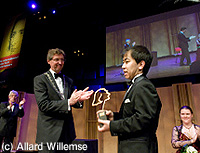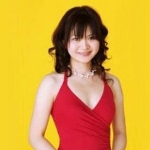A Report About History and Current Trends Among International Competitions

PTNA, as the largest piano teachers' membership association and the organizer of the biggest competition in Japan, always try to make research on the latest trends in piano education. This time PTNA introduces a report about international competitions, after received news of the victory of two Japanese pianists at major competitions; Mami HAGIWARA (1st in Geneva International Music Competition 2010 / PTNA student member) and Masataka GOTO (Liszt International Piano Competition 2011 / Grandprix of 2004 PTNA Piano Competition).

First, the report briefly introduces the historical backgrounds; arise of big competitions, geographical diffusion and the arrival of new generation. Before and after the WWII, piano competitions spread out from European countries to US and other English speaking countries etc in 1960's-80's, and many big competitions were established in a certain size and standard. From the end of 20th century onwards, this momentum came to Asian countries, Northern Europe, Southern America. Besides, competitions became more localized and theme-oriented.
The 2nd part of the report analyses the current trends among the competitions by following six aspects, 1.extension of age limit, 2. more freedom in repertoires 3.structural changes in organization 4.transparency in adjudication process 5.enlargement of audience 6.long-term career development.
As the number of competition of high level, good service and performance opportunity increases, pianists try to take much more chances as they can, and keep trying to participate even if they've won high prizes already in another competitions. Eventually a remarkable change occurred in regards of participants' age. Recently pianists of their late twenties and thirties frequently appear, and thus several competitions set up the age limit higher than 35, 40, or even no limit.
Another major change is the effort for transparency in adjudication process. Nowadays some competitions start to disclose the jury's points after the announcement of the final result. And some are trying to setup one-to-one discussion time between jury members and participants who didn't passed to the final round. AAF (Alink-Argerich Foundation) is giving financial support to 8 competitions annually, selected by drawing, for encouraging those special receptions. *part 3: 3 major international competition networks
In Japan, there are some precedent examples of those trends. PTNA Piano Competition is one of the very few competitions that disclose all the jury points, since 1976. And it produced a grandprix winner of 43-year-old-pianist (as of 2005), Ichiro KANEKO, at the grade superior.